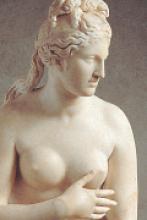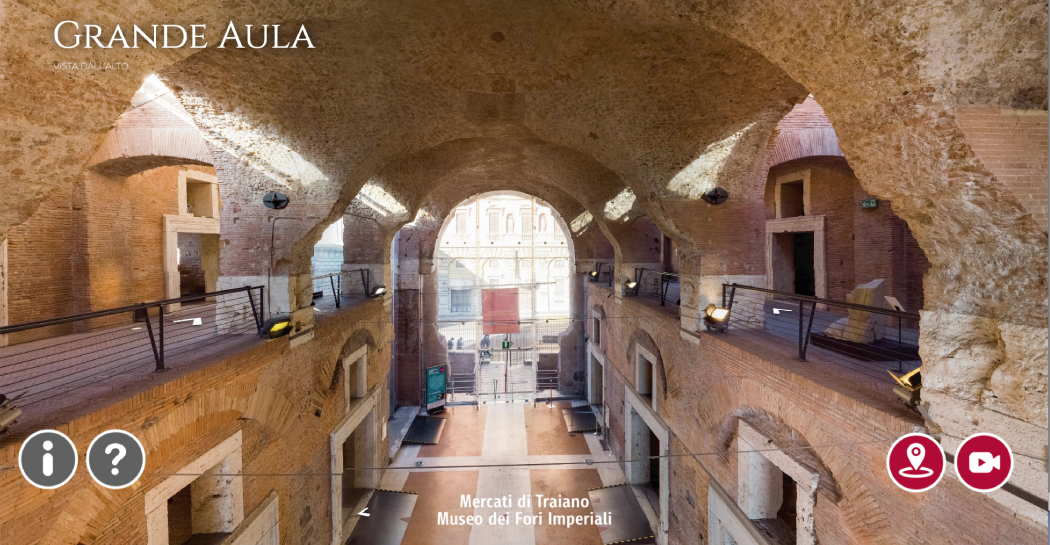The Temple of Venus Genetrix
Splendid remains of The Temple of Venus Genetrix from the reconstructions undertaken in Trajanic have survived. After the excavations of the 1930s three of the columns on the western side of the temple were raised and their imperfections brick in. Visible on them are rich entablatures with a florid frieze of engraved and die-punched spirals.

The use of amorini (cherubs) in decorating the temple is linked to the mythological figure of the god Eros, the son of Venus. Eros is depicted as a bread fed boy. The motif is repeated on the lacunari (semi-circular decorations) of the brick entablatures and on the frieze that once belonged to the first internal column order of the cella.
From ancient sources, we know that the temple hosted numerous works of art: dattiloteca (collections of engraved gems) and statues, including statues of Cleopatra in gold leafed bronze and Julius Caesar ( sidus Caesarus).
The interior decoration of the Trajanic cella included two orders of columns that were placed against the walls with pilasters behind them. The first series were decorated with amorini bearing various objects: among those preserved are a shield with the head of Medusa and a quiver; other elements feature amorini pouring liquid from an amphora into a basin. Perhaps, symbolically, the objects evoke the presence of various deities accompanying the goddess in her role as nature’s progenitor.











































